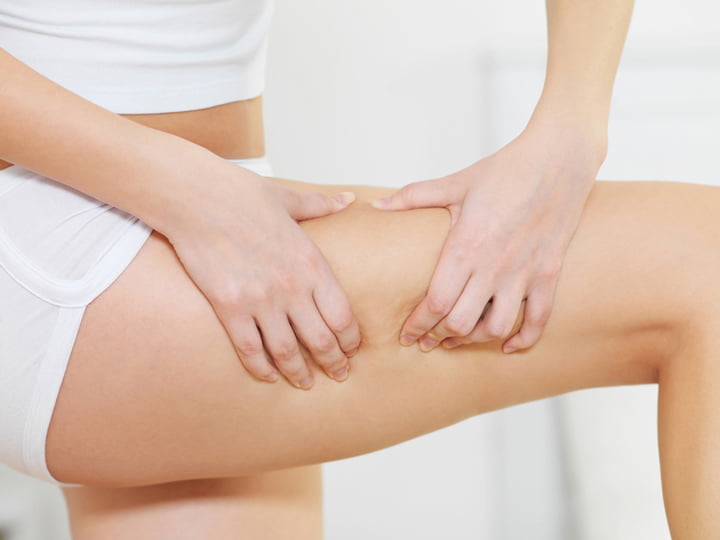Tips for draining excess liquids

The majority of your body is actually made up of water. It is present in your blood, organs, bones and even in extracellular and intracellular spaces. In some cases it may increase anomalously and become concentrated in interstices, resulting in what is known as water retention.
What is water retention?
The majority of your body is actually made up of water. It is present in your blood, organs, bones and even in extracellular and intracellular spaces. In some cases it may increase anomalously and become concentrated in interstices, resulting in what is known as water retention. In most cases it is pathological in nature (complications of other primary conditions) or caused by pharmacological treatments, and can vary in intensity.
It is the pathological build up of liquid in extra cellular, o interstitial space, partly due to a lymphatic draining deficit and an imbalance between two specific mineral salts, potassium and sodium. When sodium levels are higher than potassium, the body tends to retain more water. Moreover, this disorder also depends on alterations to both venous and lymphatic circulation.
Water stasis occurs in specific areas of the body that are prone to fat build up, the abdomen, thighs and gluteus in particular, causing swelling and in some cases oedema.
A lack of draining function in lymphatic vessels manifests itself above all in the summer or in people who spend long periods of time standing still.
Water retention in itself does not influence weight. Those who suffer from water retention may notice the needle on the scales go up, not because they have accumulated fat mass, but because of excess liquid.

WHAT ARE THE CAUSES OF WATER RETENTION?
• Circulatory problems: blood and lymphatic microcirculation disorders;
• The use of anti-inflammatory medication (FANS), oral contraceptives and corticosteroids;
• Some disorders like kidney and heart failure, liver diseases, arterial hypertension and bladder conditions;
• Diet and sedentariness.
Our body experiences physiological fluctuations on a daily basis and it is natural that there are variations in the action of hormones such as oestrogen, along with the tendency to retain liquids, like in the luteal phase of the menstrual cycle, during menopause and pregnancy.
One of the best ways to fight or reduce water retention and above all, to prevent other diseases, is to pay attention to what you eat.
First off: there are no miracle foods, beverages or supplements.
Make sure you are getting enough water
Water is the diuretic nutritional factor par excellence. Thanks to your kidneys, diuresis also enables the expulsion of undesirable or excess molecules. However this is not enough and there also needs to be focus on venous return, lymphatic circulation and capillary action.
If you are experiencing difficulties, useful tips include trying alternatives to water, like herbal teas or homemade fruit flavoured waters, learning to drink even if you do not feel thirsty, always having water within reach (in your bag, at work or on your desk).
Useful infusions include those containing fennel, nettle, dandelion, birch, butcher's broom, horse chestnut, woundwort and hypericum.

Sodium
Sodium is a vital mineral for health and everyone's survival, crucial for the regulation of blood pressure and extra cellular liquids. It is already ubiquitous in foods and in the Western Diet, sodium is used and added to different preparations and dishes. Kitchen salt, the main source of sodium, contains 40% of this macroelement. This is why excessive amounts of it are present in foods, resulting in what are sometimes undesirable consequences, like a pathological rise in arterial pressure. Therefore, in addition to fighting water retention, reducing sodium in the western diet can only be a good thing for general health. Reference values for nutrients and energy intake for the Italian population recommend no more than 1.5 grams of sodium per day. Therefore, apart from paying attention to the addition of salt to your diet, it is recommended that you eat less tinned meat, cold cuts, charcuterie products and mature cheeses.

Potassium
Potassium (K+) is another indispensable mineral and is involved in blood pressure regulation; however, unlike sodium, it also modulates intra cellular liquids. At a metabolic level, potassium exercises an action that is almost opposite to the one of sodium. Therefore potassium can help fight the effects of excess sodium. This is why it is believed that the richness of potassium can be helpful in the fight against water retention. As with sodium, potassium requirements vary according to how much we sweat, although it is more difficult to supplement; potassium is contained above all in fruits and vegetables, but can also be found in meat and fish.
Therefore it is recommended you eat more fresh fruits and vegetables, rich in fibre and water, especially those rich in potassium (tomatoes, cucumbers, peppers, fennel, kiwis, bananas, watermelon) and in vitamin C, which protects capillaries: citrus fruits, apricots, cherries, pineapple, strawberries, kiwis, melons, peaches, asparagus, artichokes, carrots, cabbage, broccoli, cucumbers, celery, onion, fennel, endive, lettuce, new potatoes, peppers, tomatoes, chicory.
WHAT TO AVOID
• Excessive consumption of sodium-rich foods and salty foods in general;
• Sedentariness and scarce physical activity;
• Activities that require you to stand still for long periods of time;
• Smoking, excess alcohol or substances like coffee;
• The habit of wearing heels that are too high.
WHAT TO WEAR
• You can opt for garments that encourage the draining of liquid, wearing them at night (see draining pyjama) or during the day (see functional slimming leggings or activewear).

